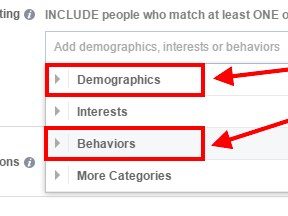Machine learning is a discipline aimed at having computers discover patterns or trends in some set of data without being explicitly programmed to recognize the pattern or trend.
A counter example will help to explain the technique.
Target is famous in the retail industry for having employed statisticians and data scientists to use purchase behavior to identify shoppers who were pregnant and then market to them. Presumably, those statisticians and data scientists used data from Target’s baby registry system to identify pregnancy-driven buying patterns. These patterns were then used to write algorithms that could identify pregnant shoppers and offer discounts or coupons that were likely to make that shopper more loyal to Target.
In contrast, a machine learning system would have taken a different approach. Rather than being told, if you will, how to identify a pregnant shopper, it would have identified those patterns itself.
While there are certainly limitations, machine learning has the potential to optimize and automate several common ecommerce systems.
1. Intelligent Customer-service Chatbots
Good customer service often requires a conversation. It is for this reason that chat works so well in ecommerce. When a shopper chats in a question, a customer service representative can answer and guide the shopper to a solution.
Similarly, when a shopper posts a question or complaint on social media sites like Facebook, Twitter, or similar, a quick and helpful response makes a world of difference in the shopper’s experience.
But small and mid-sized businesses may find it challenging to staff and maintain a team of customer service representatives to monitor chat and social media. Enter machine learning.
An intelligent, learning chatbot can manage basic customer service questions and learn how to help customers in ways that are specific to a particular online store. These chatbots will be able to take care of on-site chat sessions or social media tweets and posts.
Many third-party companies are currently rolling out learning chatbot solutions that even small online merchants can afford.
2. Improved Product Search

Machine learning could dramatically improve product search, generating results that not only provide relevant results for shoppers but also maximize profits for the ecommerce retailer.
Machine learning algorithms will vastly improve ecommerce product search capabilities.
Most current ecommerce search solutions focus on keywords or synonyms to deliver what some would deem the most relevant search results. But improved learning search will also consider click rates, conversion rates, customer ratings, and even product inventory or margin. Learning search will better understand what the shopper means rather than just what she typed.
These learning search systems will deliver product results that your shoppers are likely to want and buy.
3. Dramatically Better On-site Merchandising
Product recommendations are among the most powerful form of on-site merchandising for online retailers. Learning product recommendation systems promise to dramatically improve conversion rates and customer satisfaction.

Machine learning systems may be better at recommending products for on-site merchandising.
Current product recommendation systems generally use a particular product’s popularity to decide how and when to recommend it. But machine-learning recommendation systems may take a shopper’s particular buying habits into consideration or compare product attributes like matching colors or “looks” to recommend. The system may even predict which recommendation will be the most likely to generate incremental sales.
While many enterprise ecommerce businesses are already using learning product recommenders to merchandise products online, expect third party tools to make these capabilities available to even small online stores.
4. Market-right Pricing
Online retailers may be able to use learning algorithms to analyze and understand pricing trends, product demand, and customer behavior to determine the just-right price for a particular item, to maximize profit or achieve other ecommerce business goals.
Too often, online sellers become involved in a margin-slashing price war with competitors, particularly on marketplaces. But a learning price-management system may help retailers find the best price for each item it carries.
5. Fraud Detection and Prevention
Fraud detection and prevention tends to be more of an issue for relatively large ecommerce businesses than for small or even mid-sized retailers. The reason is simply financial. Small ecommerce business may not experience enough fraud to make it worthwhile to purchase fraud detection software.
If you’re business experiences $1,000 in fraud losses each year and it would cost $3,000 per year to purchase fraud detection software, it might make more financial sense to suffer the fraud losses and move on.
When it does make sense to employ a fraud prevention solution, you can expect machine-learning solutions to become popular. These systems will look for fraud patterns in a particular ecommerce business’s customer base. The key advantage is that a learning system will be almost unique to its ecommerce retailer. It will be looking at the trends that predict fraud in a very specific way. Ultimately, this could make the system much better at predicting fraud relative to a particular ecommerce business.
6. Better Business Decisions
Machine learning algorithms may also contribute to ecommerce decision-making, including any of the following operations.
- Predicting product demand.
- Identifying potential inventory problems.
- Classifying products and identifying keywords.
- Managing marketing campaigns.
- Estimating shipping and packing costs.
- Improving customer segmentation.





